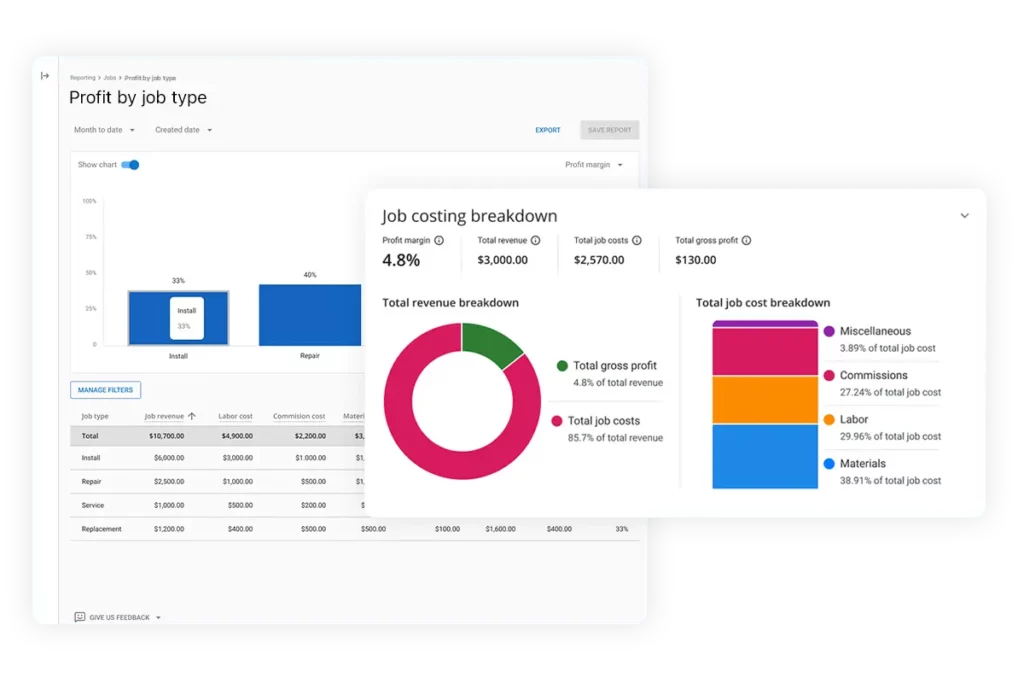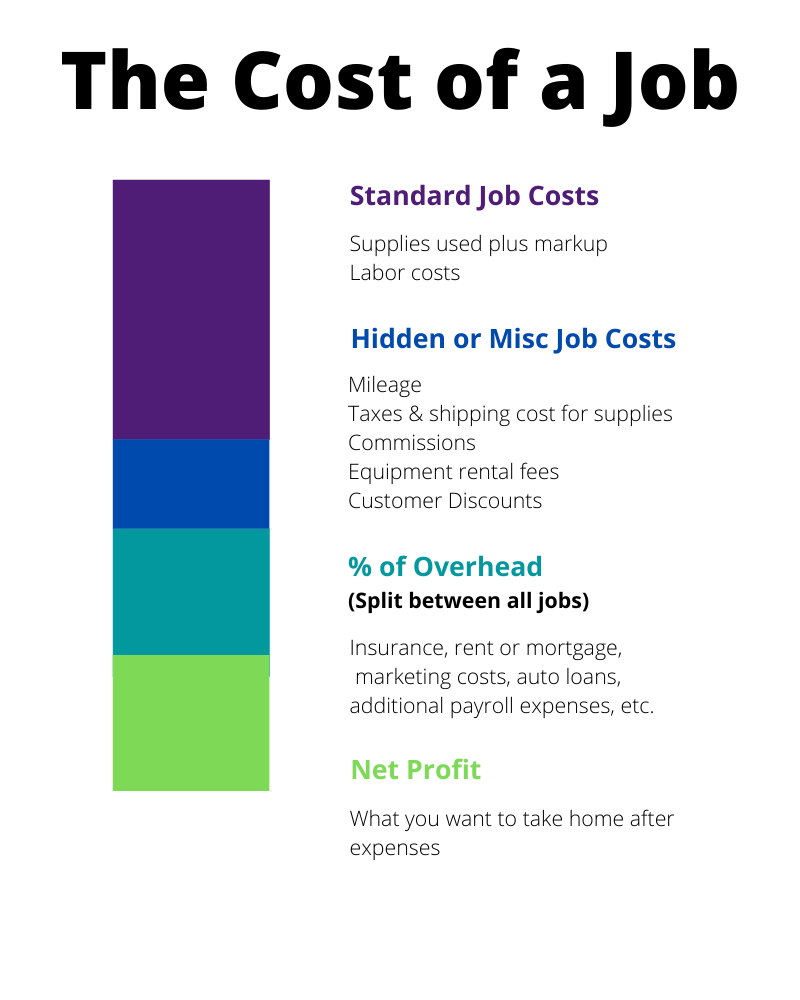
Being in the landscaping industry can be a highly rewarding and fulfilling career. Not only do you get to spend time in the fresh air outdoors, but you also get that feeling of satisfaction when you see a client’s year or outdoor space come to life.
That said, there is a lot of competition out there. IBIS World says that there are an estimated 641,782 landscaping and lawn maintenance businesses in the U.S. alone. There’s a lot of other landscaping companies out there trying to vie for the attention of your prospective customers—and your existing customers, too. So, how do you set your business apart? And how do you create amazing bids that have people saying, yes, let’s move forward?
Jump Ahead To Each Section
- How to Bid a Landscaping Job Step-by-Step
- 1. Determine Your Desired Project
- 2. Client Needs Assessment and Project Scope
- 3. Estimating Costs
- 4. Determine Your Pricing Strategy
- 5. Create a Detailed Landscaping Job Proposal
- 6. Send Your Landscaping Project Bid
- 7. Negotiating Your Bid
- Tips and Best Practices for Bidding on Landscaping Jobs
In this article, we’ll provide you with the steps on how to bid landscaping jobs plus tips on improving your bidding process. We’re confident that these tips will help you land more business in no time, creating plenty of satisfied residents and business owners.
How to Bid a Landscaping Job Step-by-Step
Before we get into the steps of bidding for a landscaping project, let’s talk about some of the other things you should do to help your business stand out in the competitive market. Here are some things that need to be high on your priority list, that should be in place long before you send that next proposal.
- Create a great website. Make it easy for visitors to find a list of your services, prices, and contact information. Many customers will want to check out your website before they agree to move forward. Plus, your website could be how customers find you in the first place.
- Create social channels on popular platforms. Start with Facebook, Instagram, and even Pinterest, and consider additional channels down the road. Take high-quality videos and photos to show off your work and post them often so customers can see the great work that you and your landscaping team can do.
- Participate in community events. Your potential customers will want to see that you are a prominent and involved member of the community. And when you can give back, please do. You’ll be surprised about how many people want to do business with those who give back to the communities that they serve.
- Build a great team. Hire skilled and friendly professionals who are passionate about landscaping. A strong team will not only do great work but also create positive experiences for your customers.
- Create a place for customers to leave reviews and respond to them promptly. Potential customers often read reviews before making a decision, so having positive feedback can help you stand out. Responding to reviews shows that you value your customers’ opinions and are committed to excellent service.
- Offer promotions and occasional discounts. Attract new customers by offering special deals. Whether it’s a discount for first-time customers or seasonal promotions, incentives can encourage more people to choose your landscaping services.
Okay, with all that squared away, let’s get into what you need to know to bid on landscaping jobs to grow your business.
1. Determine Your Desired Project

One of the many mistakes that landscapers make is trying to be everything for everybody. And while you don’t want to lose out on a bid because you only do 80% of what a customer asks for. That said, think about the services you want to offer and what your ideal project looks like. Do you want to work in the residential space? How about going after larger commercial landscaping jobs? Are you interested in both? Knowing your sweet spot will help make you the best at what you do.
2. Client Needs Assessment and Project Scope

Many landscape contractors try to offer quotes on the phone, using just pictures or a conversation to decide how much something will cost. But then, once arriving on the site, they find that the situation is not quite what they anticipated. This leads to either lost revenue or a dissatisfied customer. To prevent this from happening, do the following:
- Conduct a thorough site visit: Walk the entire property to understand the layout, soil conditions, types of plants, existing vegetation, and any potential obstacles.
- Identify client needs and expectations: Have a detailed discussion with the client about their vision, preferences, and budget. Ask questions to confirm you fully understand what they want.
- Determine project scope and potential challenges: Assess the feasibility of the project, identify any challenges or additional work that might be required, and outline the specific tasks involved. This helps in creating an accurate and comprehensive quote.
3. Estimating Costs

We said it before, and we’ll say it again—landscaping is a competitive business. But, this doesn’t mean that you should just undercut all the competition out there. Doing so will be sure to erode your profits. Instead, do your homework and think through the following:
- Materials and equipment expenses: This includes all the physical items needed for the project, such as landscaping tools, plants, soil, mulch, hardscaping materials, and irrigation components. Accurate job costing helps in providing a realistic estimate and avoids unexpected expenses. Make sure you gather all lawn square footage, and double-check your numbers for accurate measurements.
- Overhead and indirect costs: Don’t forget to factor in your overhead costs such as insurance, office expenses, transportation costs, and vehicle maintenance. These indirect costs can add up and should be included in your estimates to ensure your business remains profitable.
- Labor costs calculation: Calculate the labor costs by considering the number of hours required to complete the project and the hourly wage of your workers. This includes wages, benefits, and any subcontractor fees. Using online job estimating software can help simplify and regulate this process and provide more precise labor cost calculations.
Remember, the actual cost of materials can sometimes differ from initial estimates due to market changes or unforeseen circumstances. It’s wise to build in a small contingency to cover these potential variations.
Adding It All Up

The total project cost is the sum of all individual components.
Here’s a simple formula: Project Cost = Material Costs + Labor Costs + Equipment Costs + Overhead + Profit Margin
By carefully considering each of these elements, you can arrive at a competitive yet profitable bid for your landscaping jobs. As you complete more projects, track the differences between your estimated costs and the actual costs incurred. This practice will help you refine your estimation process over time, leading to more accurate bids and improved profitability for your landscaping business.
4. Determine Your Pricing Strategy
Once you have done a thorough cost estimation, it is time to determine your landscaping business pricing strategy. And remember, part of this involves paying attention to the prices your competition charges. Look at fees for lawn-mowing, trimming, gardening, and bigger projects such as laying patios.
If you price yourself too high, you might lose out on business. And if you price yourself too low, you’ll lose money and may run into cash flow challenges—a key reason many small businesses fail.
Here are three pricing options to consider:
- Cost-Plus Pricing: In this strategy, you calculate the total cost of materials, labor, and overhead, then add a markup percentage to prioritize a profit. This method is pretty clear and easy for customers to understand. And, it makes sure all costs are covered. It’s a popular approach in how to bid jobs for landscaping because it’s easy to justify the final price to clients with a detailed breakdown of expenses and markup.
- Flat Rate Pricing: With flat rate pricing, you charge a fixed price for the entire project regardless of the time or resources it takes. This can be appealing to customers who prefer knowing the total cost upfront. However, it requires accurate cost estimation and experience to confirm the set price covers all expenses and provides a profit margin.
- Hourly Rate Pricing: This method charges clients based on the number of hours worked. It’s flexible and compensates you for all the time spent on the project. However, clients might be wary of open-ended costs. To mitigate this, estimate the total hours required based on your experience and prioritize transparency in billing.
5. Create a Detailed Landscaping Job Proposal
In some cases, simple is indeed better. But that’s not the case when it comes to how to bid landscape jobs. Your job proposal needs to be detailed and be very clear on what is included and what’s not. This prioritizes transparency between you and the customer and prevents unfortunate surprises later in the project.
Things to Include:
- Scope of Work: Clearly outline all tasks to be completed, including planting, irrigation, hardscaping, and any other specific services.
- Materials and Costs: Provide a detailed list of all materials needed, including quantities and costs. This helps clients understand where their money is going.
- Labor Costs: Break down the estimated hours and labor costs involved in the project.
- Timeline: Offer a realistic timeline for project completion, including start and end dates and any key milestones.
- Payment Schedule: Define the payment terms, including deposit amounts, progress payments, and final payment upon completion.
- Warranties and Guarantees: Mention any warranties on plants, materials, or workmanship to give clients peace of mind.
Things to List as Excluded:
- Unforeseen Site Conditions: Make it clear that any unexpected issues discovered during the project (e.g., hidden utilities, poor soil conditions) are not covered in the initial estimate and may incur additional costs.
- Maintenance Services: Specify if ongoing maintenance services (e.g., lawn care and seasonal planting) are not included in the project scope and are available at an additional cost.
- Permits and Fees: State whether permits and related fees are the client’s responsibility or included in your proposal. Most landscaping contractors will choose to take care of this for the client, but there are some instances where the customer should do so. You may also wish to indicate that homeowners or property managers are responsible for getting appropriate approvals from homeowners associations as applicable.
Using landscaping business software and a sales proposal tool can help simplify and provide uniformity in the creation of these detailed proposals. These tools can keep you accurate and professional, making it easier to manage project details and client expectations.
6. Send Your Landscaping Project Bid
Now that you’ve done your due diligence, it’s time to send the landscaping bid to the customer. When it comes to getting them that bid, timing is everything. While you want to make sure you give a detailed estimate and get it all correct, you need to keep in mind that your customer is waiting. And for some projects, they are looking for immediate gratification. So, if it takes you a week or longer to send your bid, the chances are that they’ll forward it to someone else.
Aside from timing, we encourage sending the proposal via email. First, this gives you the customer’s email which you can use for future newsletters or to communicate those promotions and occasional discounts that we mentioned earlier. But also, this gives your customer—and you—a paper trail and an easy mechanism for future communications.
7. Negotiating Your Bid
You can anticipate that some customers will want to negotiate with you for a better price. This is pretty common in the service industry. Here’s what you need to consider:
- Effective Communication with Clients: Clear communication is key. Listen to your clients’ concerns and explain your pricing structure and the value of your services. Use your landscaping business management software to provide detailed breakdowns and build trust.
- Handling Objections and Questions: Be prepared for objections and questions. Address these calmly and professionally, using your sales proposal tool to justify your figures and reassure clients that your pricing is fair.
- Negotiation Strategies for Win-Win Outcomes: Aim for win-win outcomes. Offer small concessions like early payment discounts or bundled services, but make sure you maintain profitability. Consider adding value with complimentary follow-up visits or minor additional services.
Tips and Best Practices for Bidding on Landscaping Jobs
Aside from the steps we shared above, there are some other things that you need to do to make sure you have the winning bid. And while these may seem obvious, it is easy to overlook them when we’re in the weeds—literally and figuratively—running a landscaping business. Here are some things to consider.
Build a Strong Portfolio
Your prospective clients want to see what you have done for others. This means you need to have a professional portfolio ready to share. And you can do this in a couple of ways. While some landscapers like to bring a binder with photos of past projects to show customers, an easier way to do this today is to create a photo gallery on your website.
Types of Pictures to Include
- Before and After Shots: Showcasing transformations can have a powerful impact. Potential clients love seeing the improvements you can make.
- Unique Project Types: Include photos of different types of projects, such as garden designs, patios, walkways, and water features, to demonstrate your versatility.
- Close-Ups and Wide Shots: Use close-ups to highlight details and craftsmanship, and wide shots to capture the overall design and layout.
- Seasonal Work: Show your work across different seasons to highlight your ability to create beautiful landscapes year-round.
Present Your Bid Professionally
Just sending a bid via an email as an attachment is not going to cut it these days. You need to make sure that it is presented professionally. And this starts long before you send the email or hand-deliver the bid.
Here are some tips to follow to make sure your bid is not only delivered professionally but is likelier to be well-received.
- Set the Stage During the Walk-Through: Make a strong first impression by dressing professionally, arriving on time, and being well-prepared. Take thorough notes and ask detailed questions to show your commitment to understanding the client’s needs.
- Be Polite and Courteous: Treat your potential clients with respect and professionalism throughout the entire process. Good manners and a positive attitude can go a long way in building rapport and trust.
- Manage Expectations: Clearly explain the scope of the work, timelines, and any potential challenges during your initial meetings. This helps prevent misunderstandings and sets realistic expectations for the project.
- Use Professional Tools: Utilize landscaping business software to create polished, detailed bids that are easy to understand. A well-organized bid reflects your professionalism and attention to detail.
Follow-Up Effectively
Once you send that final proposal, don’t take on that set-it-and-forget-it mentality. Even though today’s consumers want immediate gratification, sometimes life gets in the way and people get busy. So, while their best-laid plans might have been to get back to you immediately, it’s possible the bid just got pushed to the wayside.
This means you are going to need to follow up. But, it also means you need to balance how often you follow up so as not to come across as overbearing. Here is what we recommend for the best follow-up process.
- General Rule of Thumb: Follow up every 3–5 days until you receive a response or decision. This frequency keeps your proposal top-of-mind without seeming too aggressive.
- Pause After Two Weeks: If you haven’t heard back after two weeks of regular follow-ups, pause your efforts. This gives the client some space to consider your proposal without feeling pressured.
- Try Again After 30 Days: If there’s still no response after your two-week pause, send a final follow-up after 30 days. This last attempt serves as a gentle reminder and shows your continued interest in the project.
Simplify Estimating Landscaping Jobs With Housecall Pro
To grow your landscaping business, you need to get customers to accept your bid. By following our tips in this article, you’re not only more likely to win bids, but you’ll feel good knowing that you presented your expertise professionally.
Housecall Pro can help simplify the process of how to bid on landscaping jobs with our comprehensive tools designed for contractors. From creating detailed estimates to managing follow-ups, Housecall Pro simplifies every step, keeping you organized and efficient.
Sign up today for your free trial and see how Housecall Pro can take your landscaping business to the next level.






